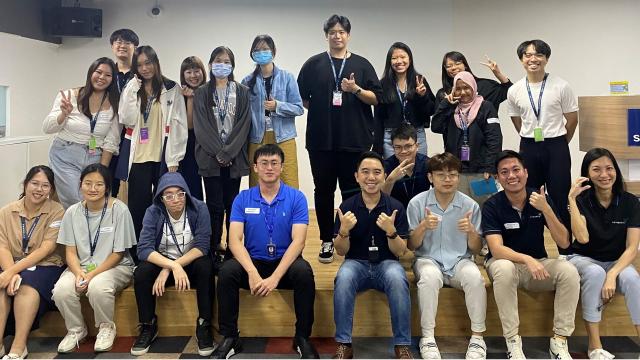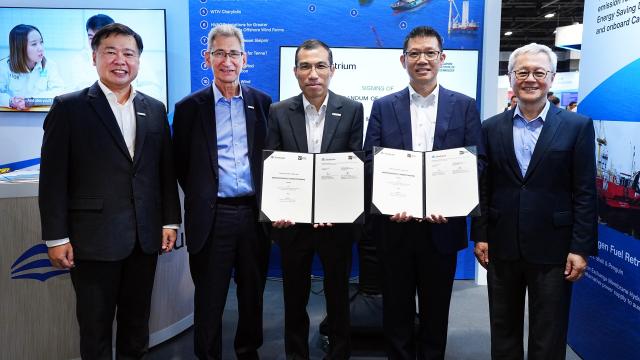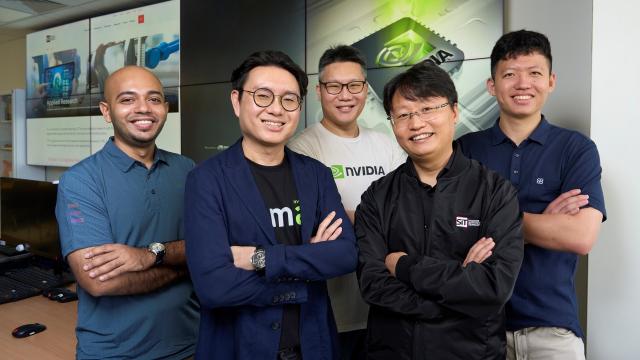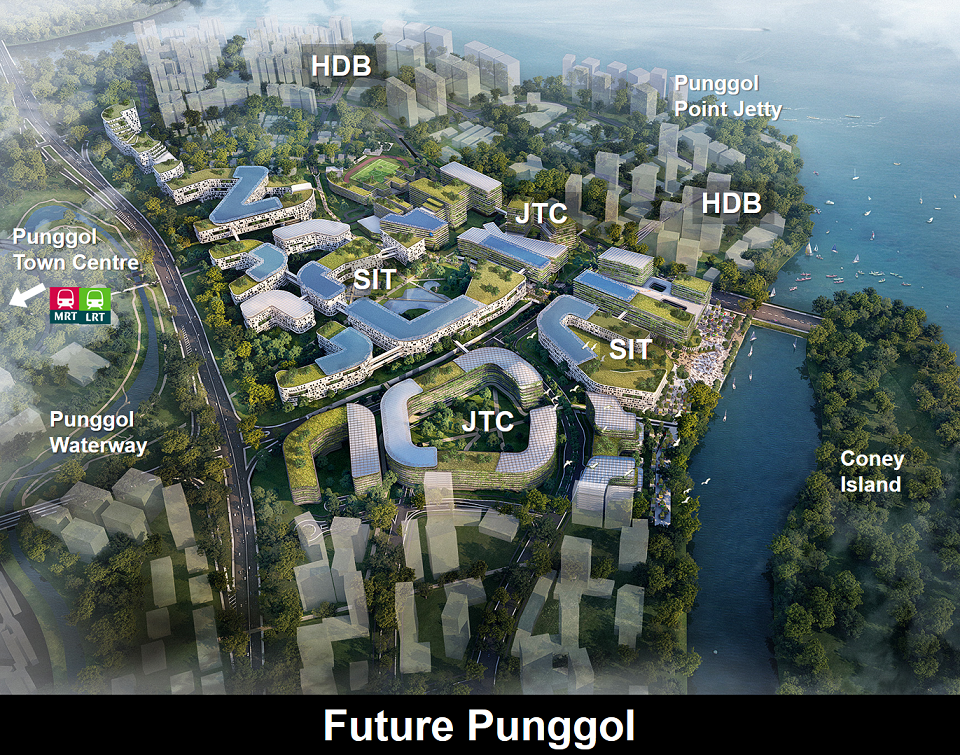
10 September 2019 – The Singapore Institute of Technology (SIT) will commence construction works for its centralised campus in Punggol after the groundbreaking ceremony on 10 September 2019, officiated by Guest-of-Honour, Prime Minister Lee Hsien Loong. The campus, situated in the Punggol Digital District (PDD) will strengthen SIT’s position as an industry-focused university of applied learning with close ties to the community.
The future SIT campus will consolidate SIT’s operations, and will be able to accommodate 12,000 students – nearly twice the combined capacity of SIT’s current distributed campuses. Occupying a total land area of approximately 91,000 square metres over two plots of land, the centralised SIT campus will have a total gross floor area of around 253,000 square metres. Expected to be ready by 2023, the SIT campus is envisioned to provide students with a full-fledged university learning environment and experience.
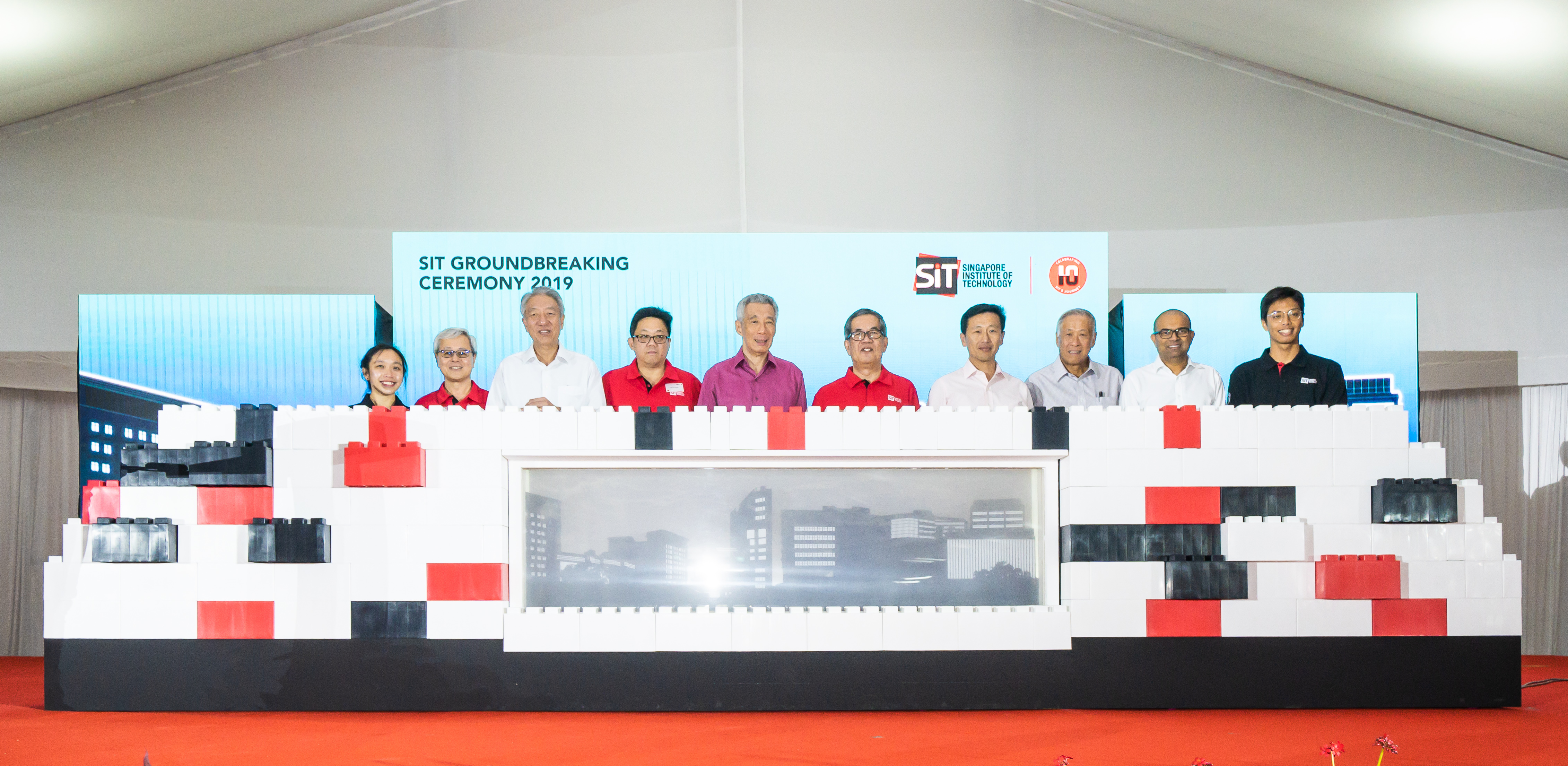
Officiating the groundbreaking are (from left to right): Ms Ong Wen Hui, SIT Alumnus; Professor Chua Kee Chaing, Deputy President (Academic) and Provost, SIT; Senior Minister Teo Chee Hean; Mr Ng Yat Chun, Chairman, SIT; Prime Minister Lee Hsien Loong; Professor Tan Thiam Soon, President, SIT; Minister Ong Ye Kung; Minister Ng Eng Hen; Senior Minister of State Janil Puthucheary; and Mr Muhammad Firdaus Bin Ayub, SIT student.
Professor Tan Thiam Soon, President, SIT, commented: “SIT’s role is to provide an applied learning pathway for young Singaporeans, in particular polytechnic graduates, to harness their aspirations. At steady state, SIT will have an annual intake of over 3,000 undergraduates and will play a key role in meeting the government’s target of 40 per cent cohort participation rate by 2020.”
Borderless and integrated with the surrounding community and industry, the centralised campus in Punggol is envisaged to provide a vibrant learning environment which underpins SIT’s applied learning pedagogy. With this, the new campus can better support students in finding authentic learning opportunities in industry spaces located within and beyond the campus, fostering collaboration and the exchange of ideas with industry professionals. The campus is envisioned as a ‘living lab’ that integrates applied research and innovation for SIT and its partners. Students can then be exposed to cutting-edge industry know-how through working on interdisciplinary projects, as well as test-bedding of smart technologies in real-life environments. More details on the campus can be found below.
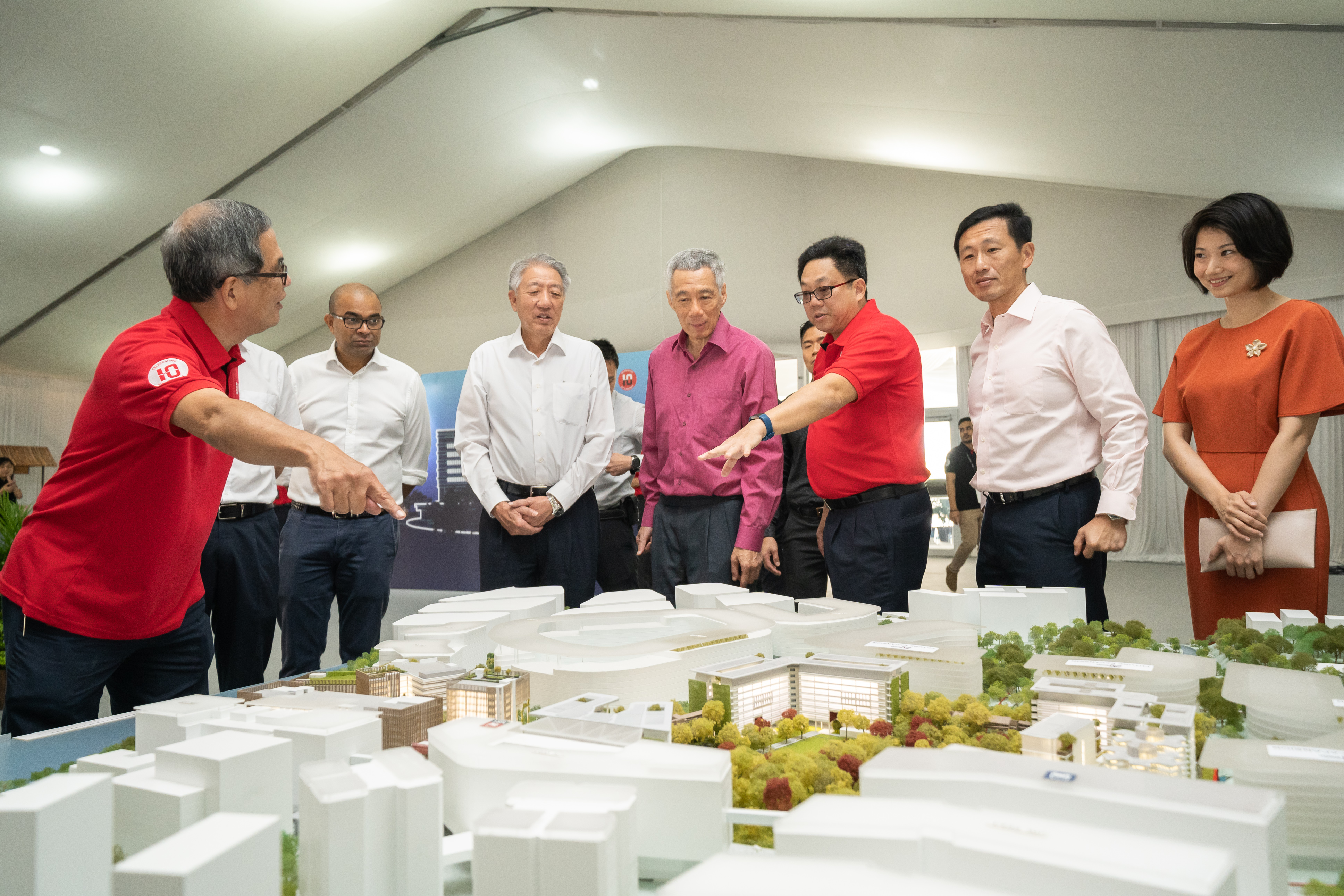
Touring of the massing model of the future campus in Punggol.
Developing the vision of the entire centralised campus in Punggol with SIT is WOHA Architects, who is the architect for the 'Campus Heart’ plot which houses the academic blocks.RSP Architects Planners & Engineers is the architect and engineer for the ‘Campus Court’ plot, which houses the administration building, additional academic blocks, auditorium and indoor sports facilities blocks.
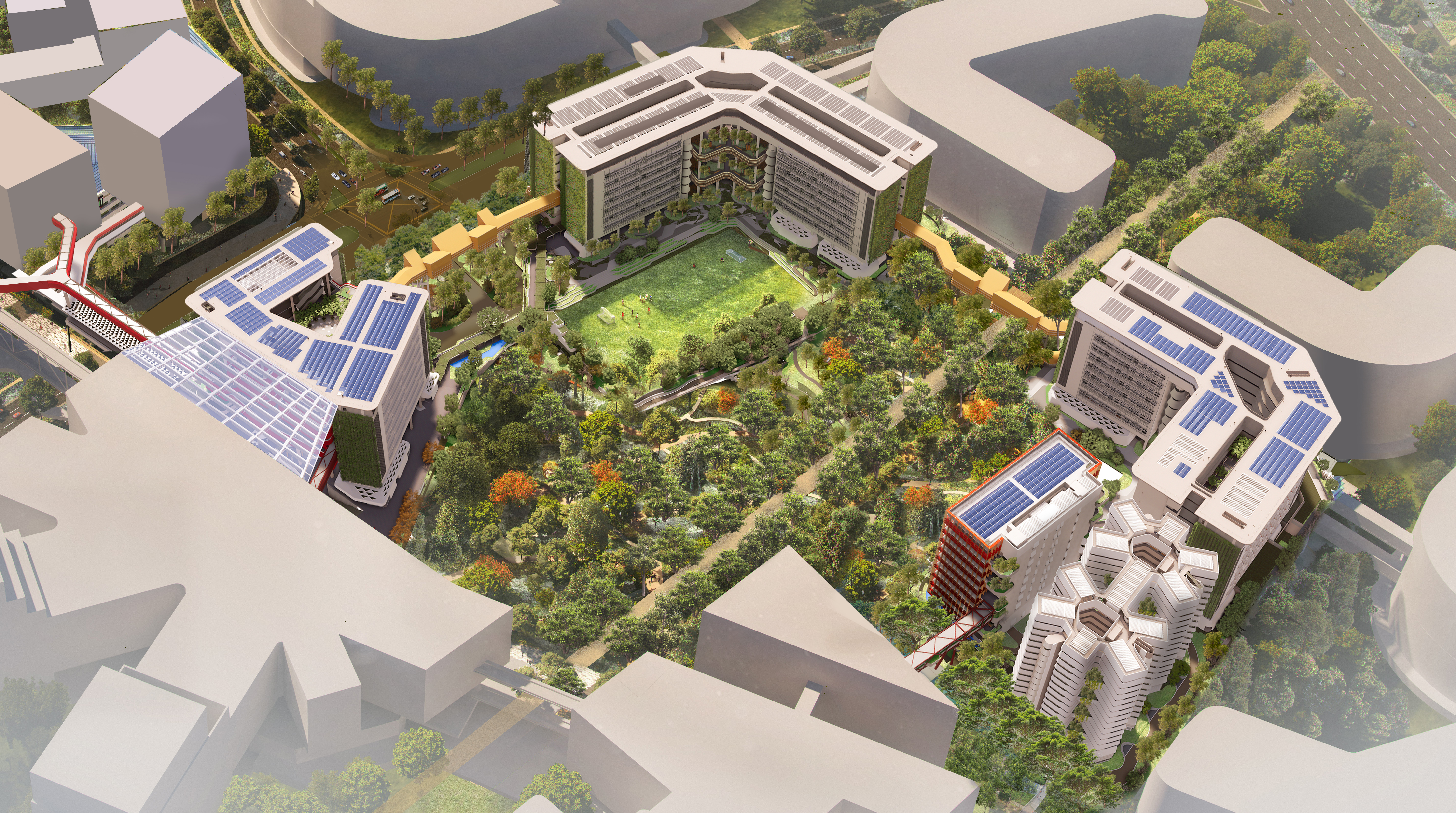
Campus Heart, located in plot 1, houses the academic blocks.
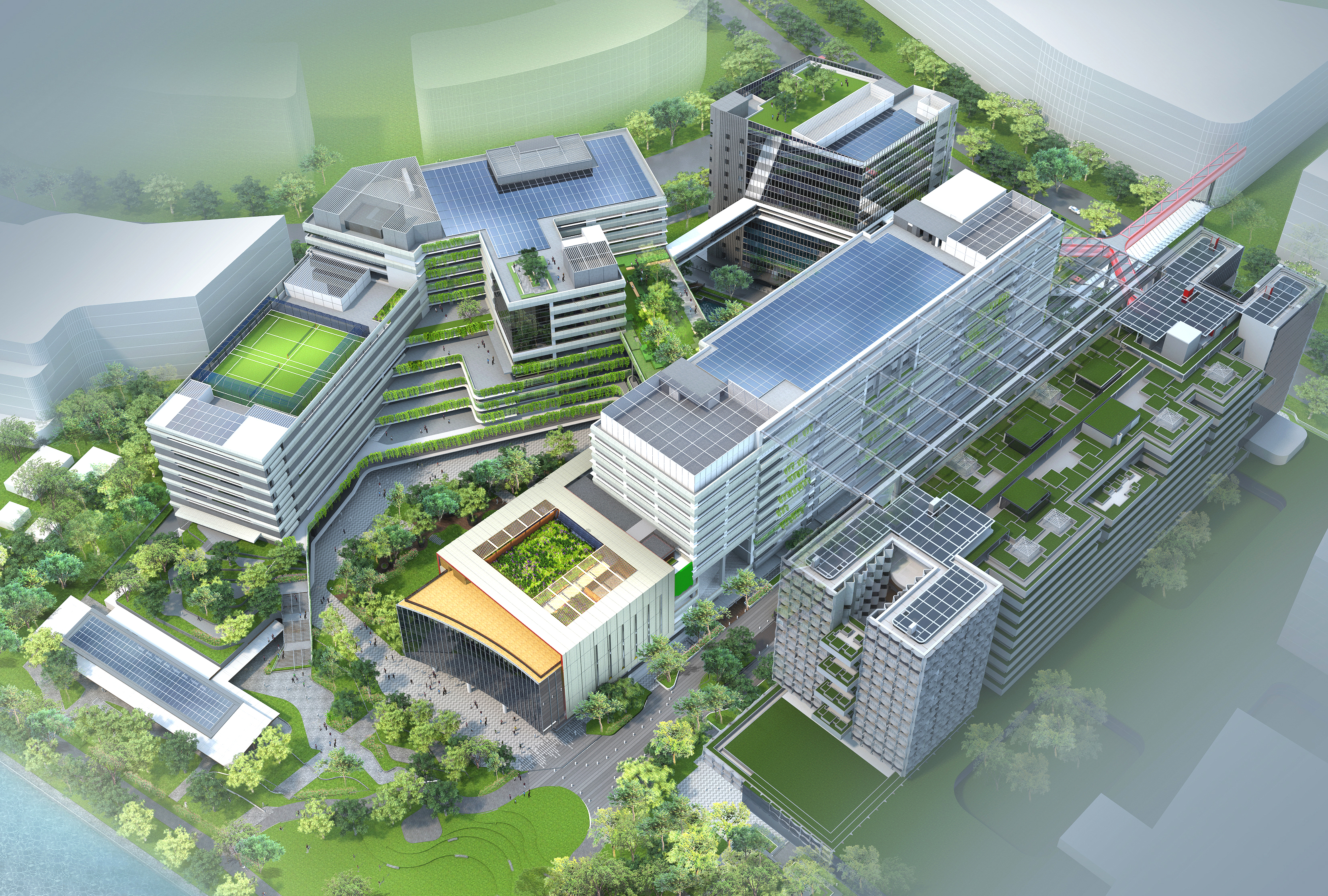
Campus Court, located in plot 2, houses the admin building, additional academic blocks, auditorium and indoor sports facilities blocks.
SIT’s new home will boast several unique features as well as design for sustainability.
Co-existence and Collaboration with the Industry
SIT will be the first autonomous university to have its campus situated in the north-eastern region of Singapore, right in the heart of the upcoming PDD, which is set to become a vibrant and inclusive district underpinned by cutting-edge technology.
The centralised campus will be co-located with JTC’s business park buildings in PDD. This will enable students, faculty and industry professionals to come together to collaborate on projects that can benefit the community. For example, new ideas conceived in SIT could be tested in PDD, bringing these ideas to the market faster. In addition, companies can tap on SIT’s applied learning and research capabilities, as well as talent pool in areas such as cybersecurity, engineering, food technology, assistive technology, allied health and hospitality. Students will be able to find real-world learning opportunities in industry spaces located within the campus, fostering collaboration and the exchange of ideas with industry professionals.
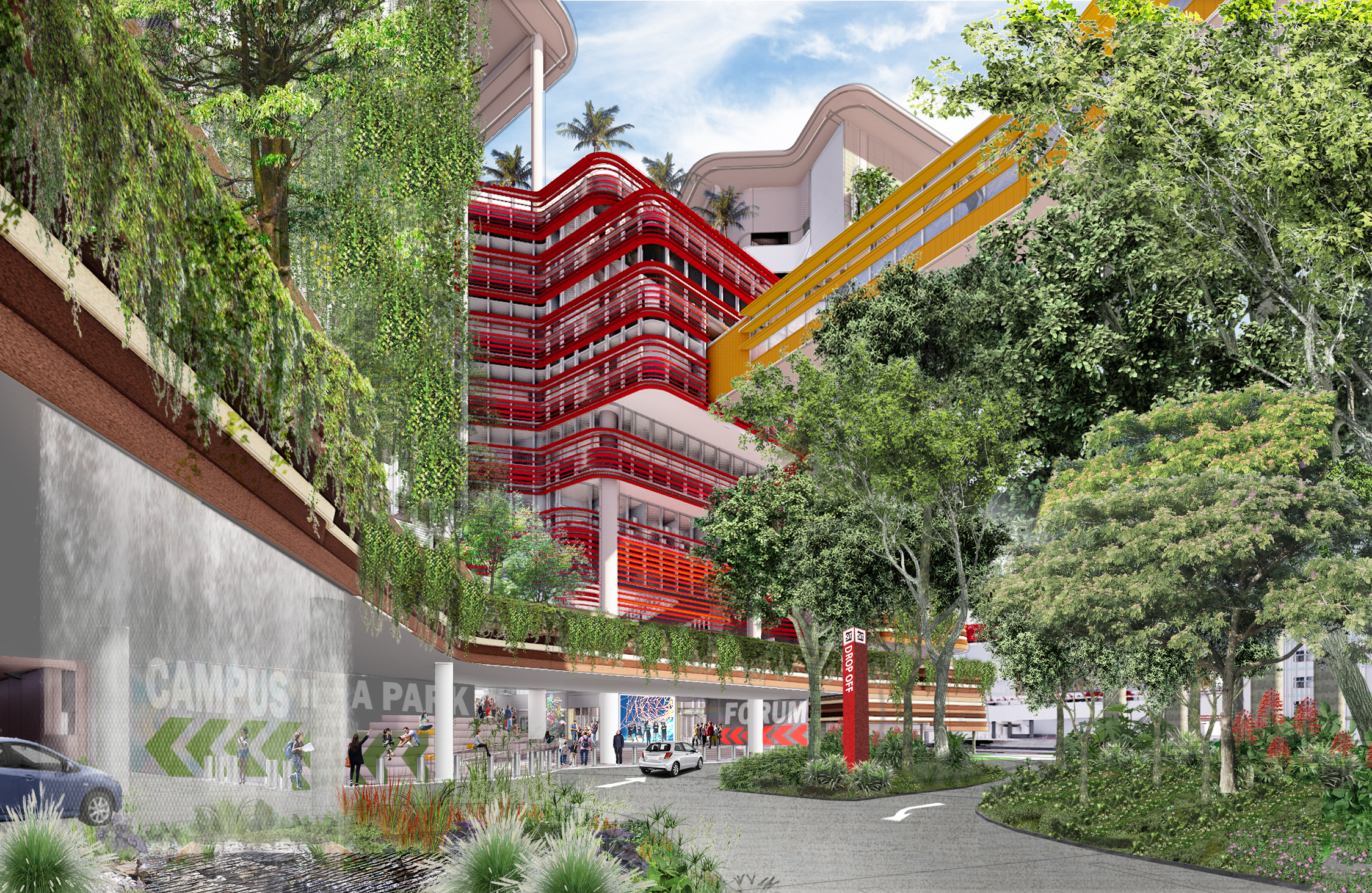
Highly visible with its red facades from along the new Punggol Road, the Learning Hub serves as a prominent landmark and anchor of the Campus Heart.
Community Places[1] for the Public
To create a highly accessible and inclusive environment, all developments within the new campus are open for public access through its porous ground levels and public spaces. The pedestrianised Campus Boulevard will be a key spine with various retail and F&B offerings, and is designed for active mobility options such as walking and cycling. The existing Punggol Road will be transformed into a 1.3-km pedestrianised Heritage Trail linking Punggol Waterway Park to the Punggol Promenade Park Connector. A bustling Market Village will offer new retail and dining options by the waterfront. Centrally located at the development is the Nexus – a large, sheltered event plaza that is integrated with the civic commons of the future Punggol Coast MRT station.
 The existing Punggol Road will be transformed into a 1.3-km pedestrianised Heritage Trail linking Punggol Waterway Park to the Punggol Promenade Park Connector.
The existing Punggol Road will be transformed into a 1.3-km pedestrianised Heritage Trail linking Punggol Waterway Park to the Punggol Promenade Park Connector.
Campus-in-a-Park by the Waterfront
Overlooking the waterfront, the new SIT campus preserves an existing forest around the scenic tree-lined Heritage Trail, giving it a distinctive ‘campus-in-a-park’ identity. Academic blocks are organised to encompass the central forest courtyard that is transformed into an accessible Community Park. This serves as the heart of SIT, contributing to a strong sense of place that is characterised by nodes for interaction, recreation and rejuvenation.
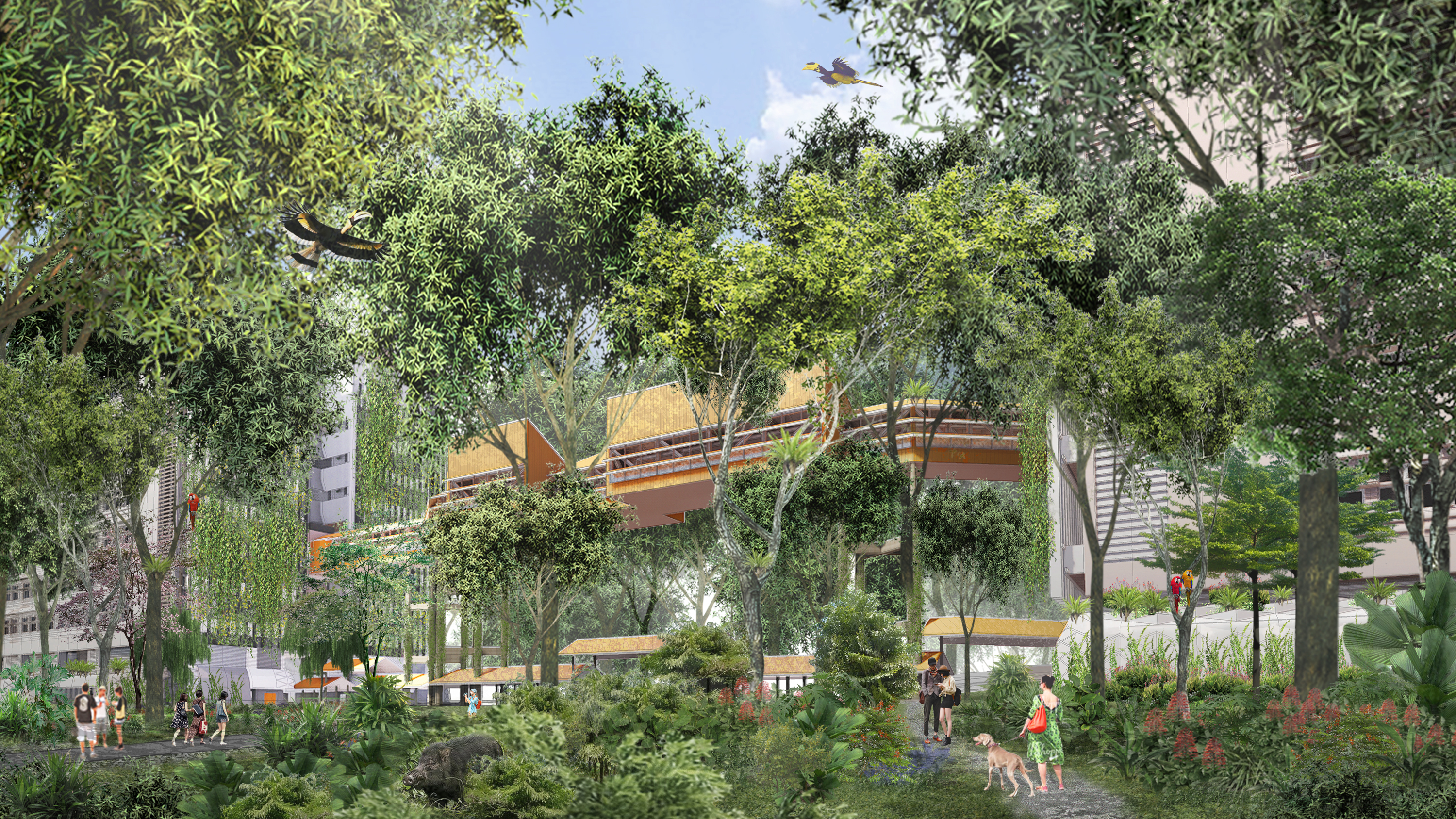
The Canopy Walk is conceived to be a link bridge spanning between two academic blocks and hovering 5 floors above the Community Park.
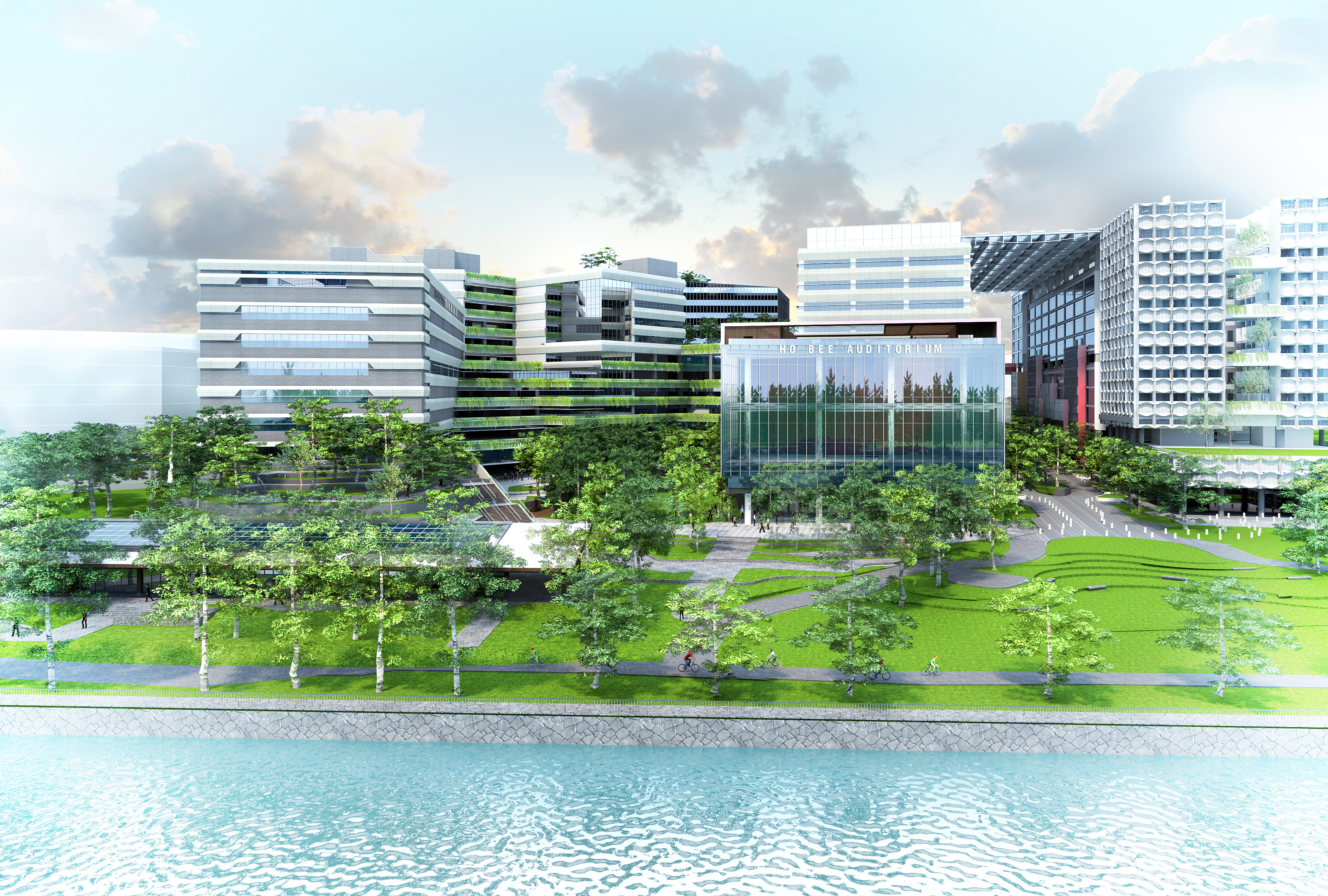
The SIT campus will be by the waterfront, facing Coney Island.
Smart Campus and Living Lab to Facilitate Applied Learning
To achieve a smart and connected campus, SIT’s future campus will be wired with a campus-wide smart sensor network of over 10,000 sensors. The sensors are capable of collecting temperature, ambient light and human presence data. These data will be shared with the Integrated Building Management System (IBMS), which will connect various building systems such as lighting, lifts, air-conditioning and security through the Internet of Things (IoT). Artificial Intelligence (AI) or Data Analytics System will continuously analyse the data and control the building’s system through the IBMS platform to derive the optimum building environment, enhance campus experience and workspace efficiency.
In addition, the campus is envisioned as a ‘living lab’ that integrates applied research and innovation for SIT and its partners. It will be a user-centric, open innovation eco-system that actively invites people, industry and community to innovate and learn from the campus. Students will be exposed to leading-edge industry know-how through working on interdisciplinary projects, as well as test-bedding of smart technologies in real-life environments made possible through the living lab.
“The aim of the living lab is to support Singapore to be a regional hub for digital advancements and talent development, by integrating education, innovation and research into real-life environments and scenarios,” explained Associate Professor Steven Wong, Director, Projects, Office of the Provost, SIT. “By involving our students and faculty in living lab projects with the industry and community, we hope to develop a prototypical SIT applied learning experience at both our current and future campuses whilst pushing the frontiers of innovative technologies, services and solutions with our applied research efforts.”
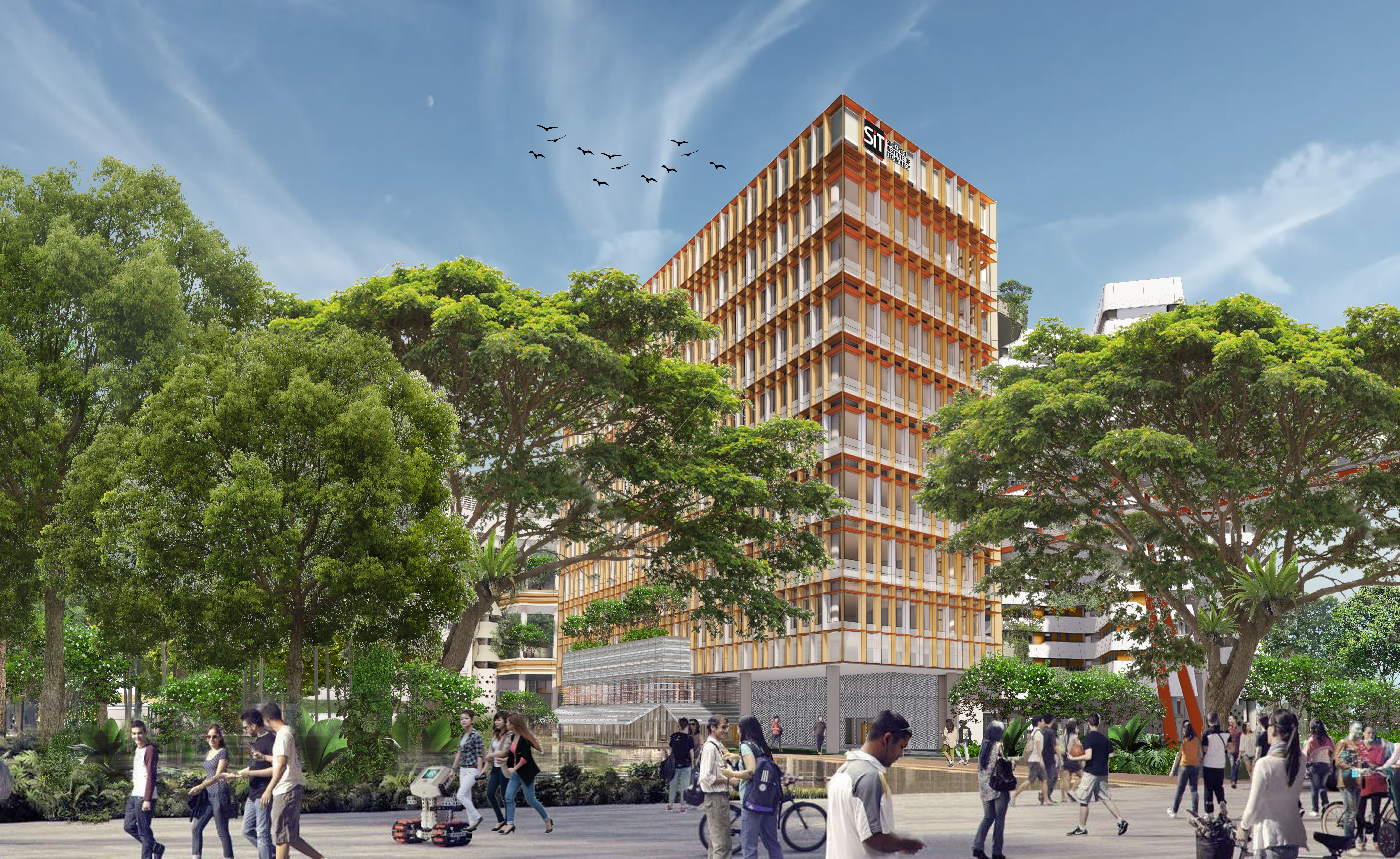
The Hatchery is conceived to drive the cross-fertilisation and incubation of ideas between academia and industry.
First Multi-Energy Micro-Grid (MEMG) in Southeast Asia
Exemplifying the living lab concept is the setting up of Southeast Asia’s first Multi-Energy Micro-Grid (MEMG), a collaborative research venture between SIT and SP Group, at the future campus. Once installed by 2023, SIT will have approximately 10,000 square metres of photovoltaic (PV) solar panels installed on the buildings’ roof tops. The MEMG will supplement the power supply to the campus, hence reducing the overall reliance on the main utility grid and contributing to its target of being self-sustainable in the long run. In addition, the MEMG will also serve as a living experimental lab to support the research, development and test-bedding of distributed energy systems as well as cyber-security solutions.
Another feature of the new campus is the District Cooling System (DCS) which provides the campus’ cooling needs and reduces carbon footprint at the estate level. Such sustainable systems will support the university’s core facilities including classrooms, laboratories, makerspaces, library, multipurpose hall, administration offices, auditorium and food court.
[1] The community places, including the Campus Boulevard, Heritage Trail, Market Village and Nexus are located within PDD, in proximity to SIT’s campus. The Heritage Trail will pass through the Community Park in SIT’s Campus Heart.
Singapore Institute of Technology (SIT) is Singapore’s university of applied learning. It aims to be a leader in innovative university education by integrating learning, industry and community as part of its unique pedagogy. Partnering world-class universities, SIT offers applied degree programmes targeted at growth sectors of the economy. SIT also aims to cultivate in its students four distinctive traits, or the SIT-DNA, which will prepare them to be ‘thinking tinkerers’, who are ‘able to learn, unlearn and relearn’, be ‘catalysts for transformation’ and finally, become ‘grounded in the community’.
Established in 2009, SIT currently has six distributed campuses, with its main campus in SIT@Dover. SIT became an autonomous university in 2014 and is expected to move to its new centralised campus in Punggol in 2023 when the new campus is expected to be completed. SIT’s Punggol campus will be part of the Punggol Digital District, and will feature the Campus Boulevard which will connect residents to the waterfront and Coney Island. For more information, visit www.SingaporeTech.edu.sg

